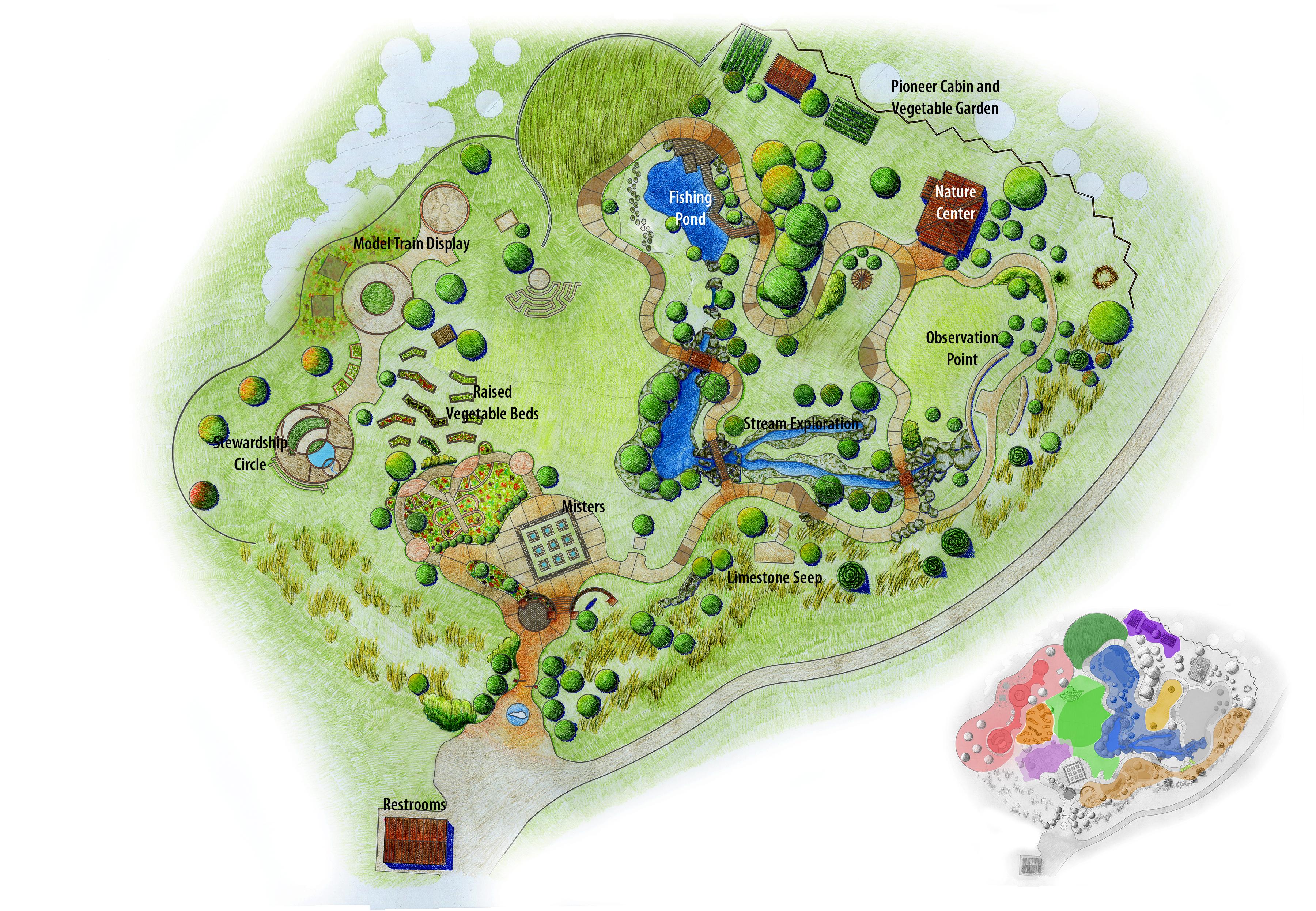Kentucky Children's Garden Features
Kentucky Children's Garden Features
General Activities
We encourage you to:
- Ask an educator what they're doing and if you can help.
- Go to the Cutting Garden if you want to pick a flower.
- Try some vegetables grown in the garden.
- Move rocks to make a dam in the stream.
- Sing, play and dance!
- Get dirty and walk on the grass.
- Smell the flowers.
- Listen to the sounds of the garden.
- Learn the name of a plant.
- Learn something new about the environment.
Features & Activities to Explore

Misters Quilt
The garden features a play area with water features and sections of wildflowers, resembling a quilt. Nine native wildflowers are represented: Trilium, Solomon’s Seal, Goldenrod, Pink Lady’s Slipper, Columbine, Jack in the Pulpit, Shooting Star, Mayapple and Bloodroot.
Quilting is a traditional art form that pioneers brought with them to America. Settlers used quilts as bed coverings and as decoration. People continue to quilt today, and Kentucky is a center for the quilting arts.
Activity: See if children can find their birthday on the quilt pattern and make a wish.
Karst Topography
When limestone interacts with water underground, the water dissolves the limestone and forms a combination of caves, underground channels and a rough, bumpy ground surface, which is called Karst topography. The limestone makes Kentucky’s soil rich in calcium, which makes central Kentucky ideal for farming and the horse industry.
Karst topography forms the world's longest cave system right here in Kentucky − the Mammoth Cave system, which is over 412 miles long. Notice the “fossils” in the pavement of different shells and water life. That's because Kentucky used to be entirely under water!
Activity: Ask children if they can find a cave, sinking stream or sink hole in the Kentucky Children's Garden.

Knobs Overlook
The Knobs are rocky hills in Kentucky that border the Bluegrass region. In the valleys, the land is rich and good for farming.
The Knobs is the smallest region in Kentucky, and it is characterized by thick forests and a diverse collection of stone and minerals, including limestone and coal.
Activity: Encourage children to climb up the steps of the Knob overlook.
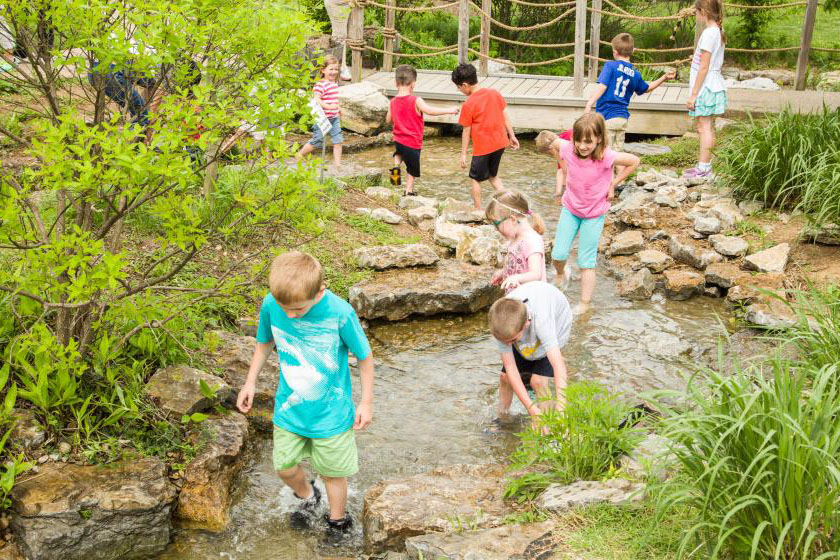
Palisades
The Palisades are located by the Kentucky River and are made up of steep exposed limestone cliffs.
Kentucky was once covered by an ocean. When the ocean receded, the animals that lived there got pushed together to make limestone, a sedimentary rock. Over half the surface rock in the state is limestone, and pioneers used it for building materials.
The Kentucky River Palisades provide an ecosystem for four endangered species of bats and several rare and endangered species of plants.
Activity: Encourage children to see if they can find fossils in the rock.
Native American Encampment
Native Americans often settled by sources of water. Tribes that were once in Kentucky include the Shawnee (central), Chickasaw (far west), Cherokee (east) and Yuchi (southeast).
The Three-Sisters Garden was grown by Native Americans and does not rely on plowing, but instead upon the natural sustaining relationship between corn, beans and squash. Beans fertilize the soil for the corn and squash plants. The corn stalks support the beans when they grow tall. Squash plants act as a ground cover and keep out weeds in the garden.
Activity: Encourage children to look inside the wigwam to experience how Native Americans might have lived. And look closely at the prints in the sidewalk from the cave to the encampment. What do you see?
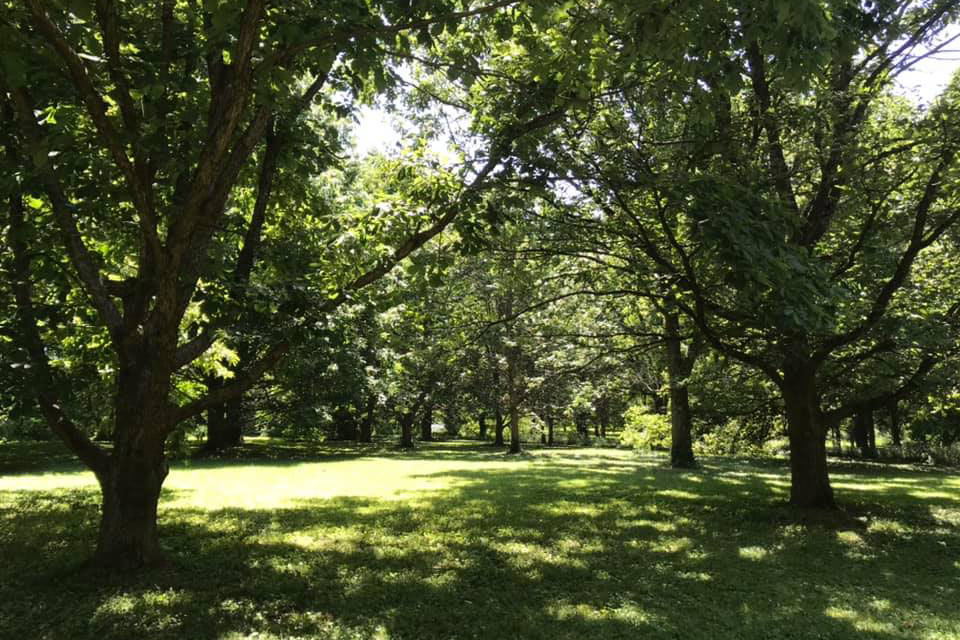
Bluegrass Overlook
The Bluegrass region is known for its rolling green hills, historic rock fences, horse farms and good soil for farming.
The earliest settlers in Kentucky built dry-laid fences around farmsteads, cemeteries and mills. The techniques used to build the fences were brought to this area by Scots-Irish immigrants using traditional Irish and Scottish methods.
Activity: Encourage children to look out at the overlook.

River & Flatboat Area
Other than Alaska, Kentucky has the most moving water in the country. Our western border touches the Mississippi River, the largest river in the U.S. Many people would have used this route to travel and ship goods. Flatboats also traveled down the Ohio River on our northern border.
Flatboats were used for trading and shipping. Large flatboats built by traders often carried 30 or 40 tons of cargo per trip. They shipped cloth, food, ammunition, tools and agricultural implements. Once goods were delivered, the boats were disabled and driven back to their starting point by wagon.
Activity: Encourage children to sit on the book bench next to the pond donated by John Cirigliano featuring text from Harlan Hubbard’s novel "Shanty Boat." This is one of 38 book benches celebrating Kentucky native authors throughout Lexington.
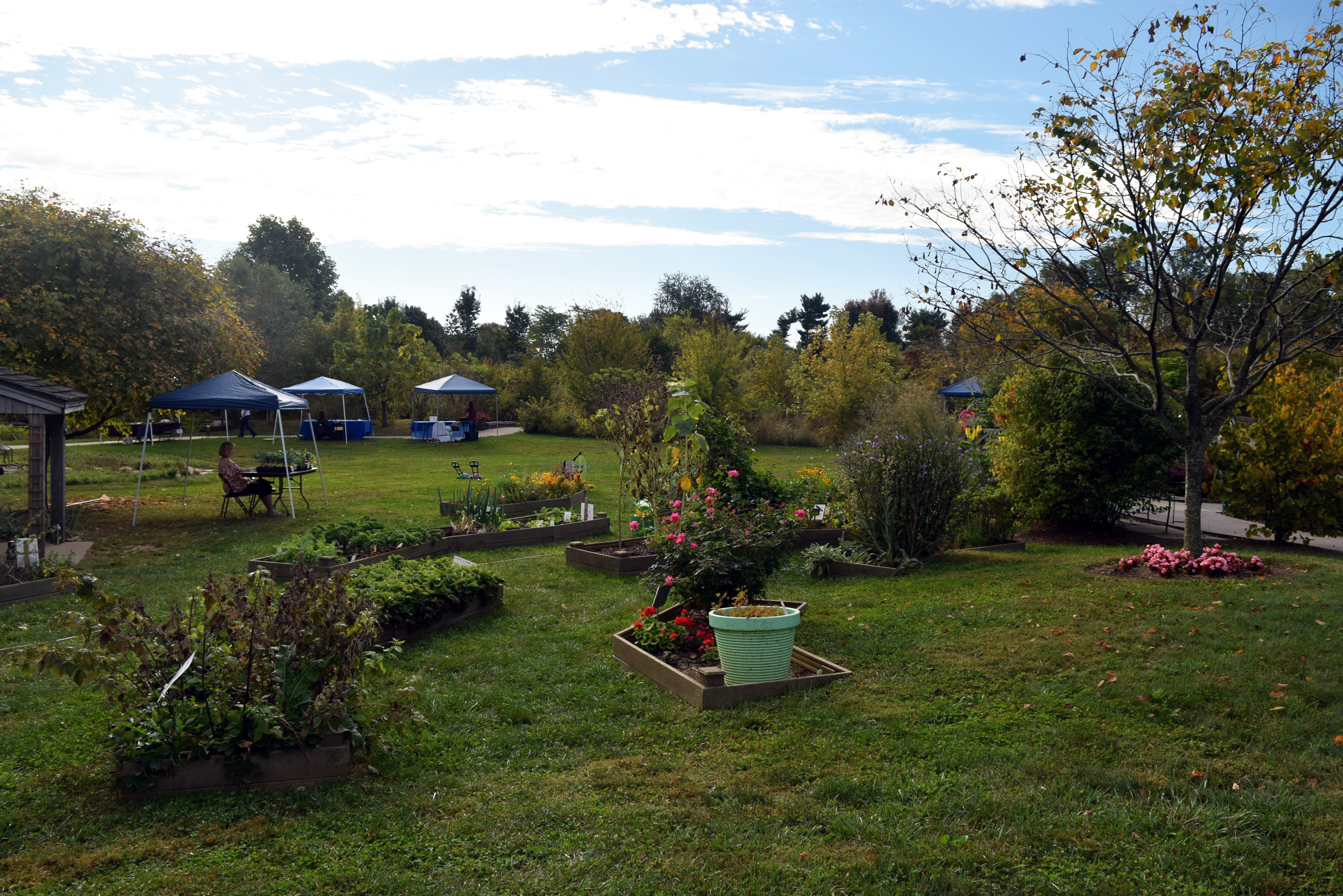
Raised Garden Beds
The Kentucky Children's Garden includes 10 raised garden beds, and their themes change every year. Beds are labeled once they are planted.
We have a wide variety of vegetables, herbs, fruits, and flowers throughout the season.
Activity: Have children water and care for the plants found in these garden beds.
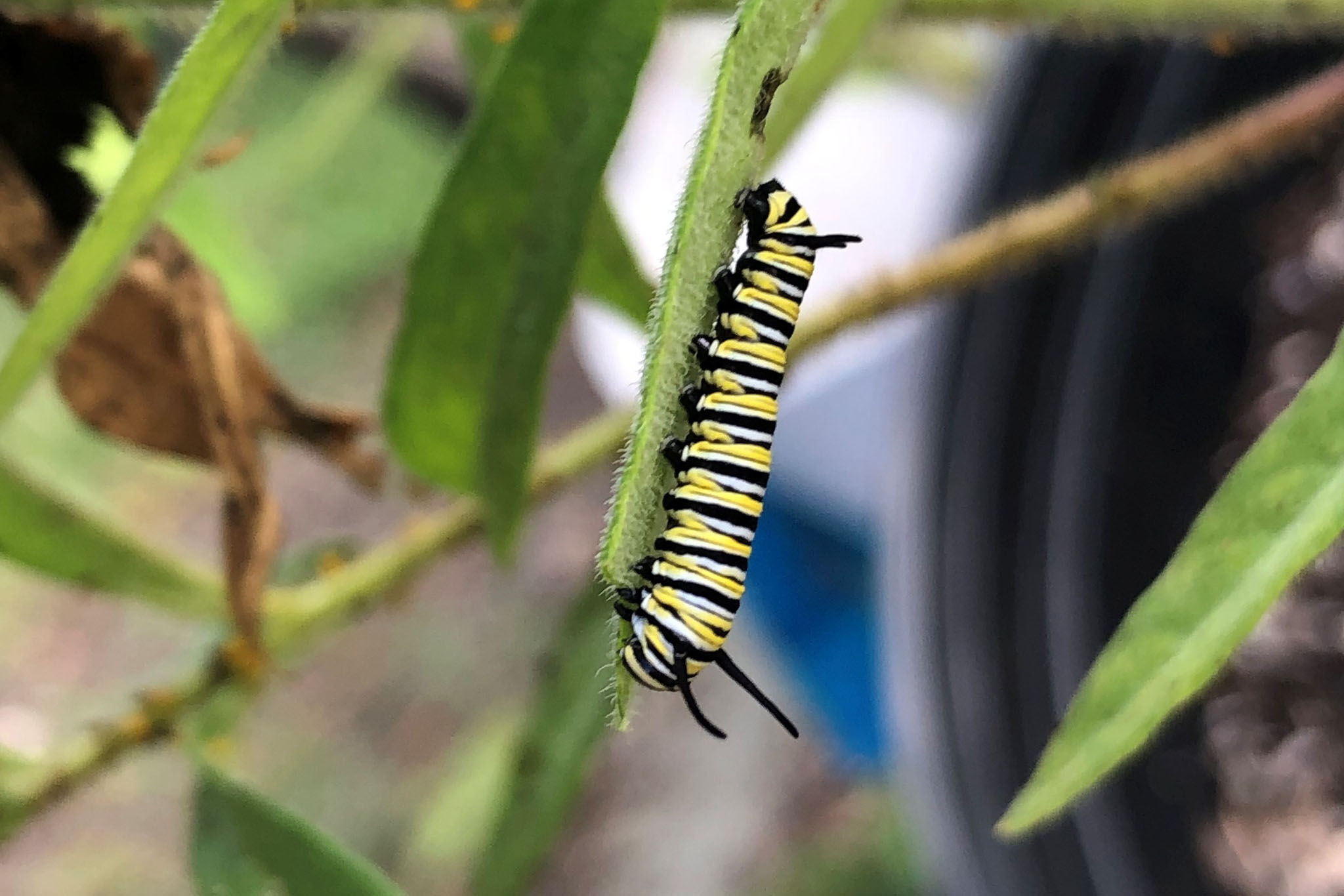
Butterfly Garden
Colors, such as red, yellow, orange, pink and purple blossoms, and continuously blooming plants are butterfly attractors. Our state butterfly is the Viceroy. Its wings have an orange and black pattern.
Every living thing is growing, and we all have different lifecycles. Butterflies go through a metamorphosis − four different stages of growth. These stages are: egg, caterpillar, chrysalis (or pupa) and butterfly (or adult).
Activity: Encourage children to fly through the metamorphosis tunnels and emerge a beautiful butterfly. And see if children can name other animals that act as pollinators.
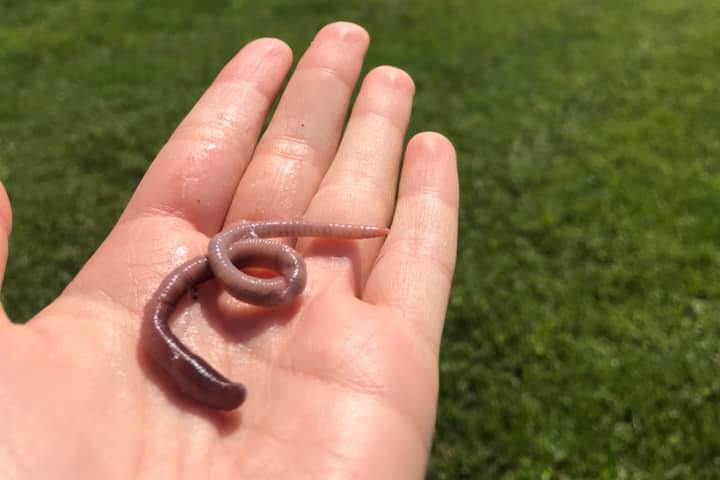
Nature Center
The Nature Center was designed by Jon Carloftis and Longwood Antique Woods and created with reclaimed materials. The floor pavers are from downtown Lexington and date to the early 1900s.
This is where we keep most of our critters, such as the worm bin, fish tank and hissing cockroaches.
Activity: Encourage children to observe the fish and insects.

Pennyrile (Tall & Short Grass Prairies)
Prairie plants thrive when burned. Burning recycles the nutrients, and the extra sunlight after a burn helps plants grow faster. Some seed coats need to be burned to cause germination, and many forbs and grasses grow well after a burn. Fires occur both naturally and were traditionally set by Native Americans.
Perennial and herbaceous plants, such as Coneflower, Thimble Weed, Grasses, Rattlesnake Master and Goldenrod, are important food for birds and insects and have concentrated food and nectar sources.
Activity: Children can observe the plants from a maze that runs throughout the Prairie.
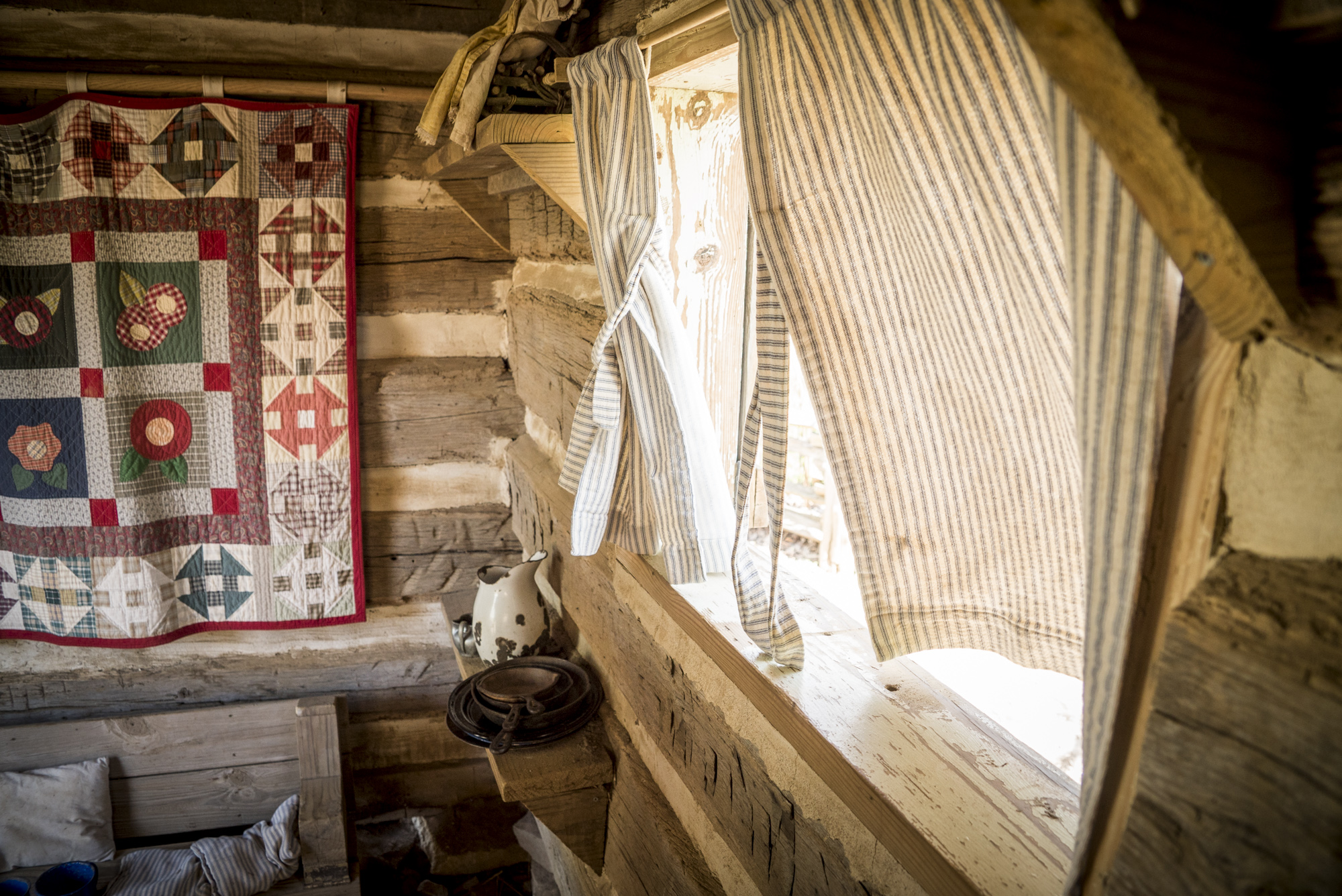
Log Cabin
This is an authentic log cabin from Kentucky that was resized for play by Longwood Antique Woods.
Many pioneers came to Kentucky in the mid-18th century. Some built log cabins like this with dry-laid foundation and timber, with chinking between. Chinking was often made with a mixture of cement and pieces of rock and stone to make the cement last longer.
Also nearby are the fenced heirloom vegetable garden and field crop demonstration garden.
Activity: Remind children that pioneers wouldn’t have had many of the things we take for granted today. Could they go to the grocery store to buy fruits and vegetables?

Stewardship Circle Runoff Demonstration
After we received a Sustainability Grant from LFUCG, an Eagle Scout created a runoff and erosion display. The demonstration allows us to pour water on two different ecosystems and compare how different plants affect water filtration into the soil. Plants that are ideal in rain gardens have extensive root systems; these long roots allow water to filter into the soil.
This is a child-scaled amphitheater. There is also a demonstration rain garden to show visitors what they can plant around their homes to alleviate standing water.
Activity: Children can use the hand pump to learn about erosion in the erosion play area in the center. Children can also redirect water from the pump using the aqueduct system.
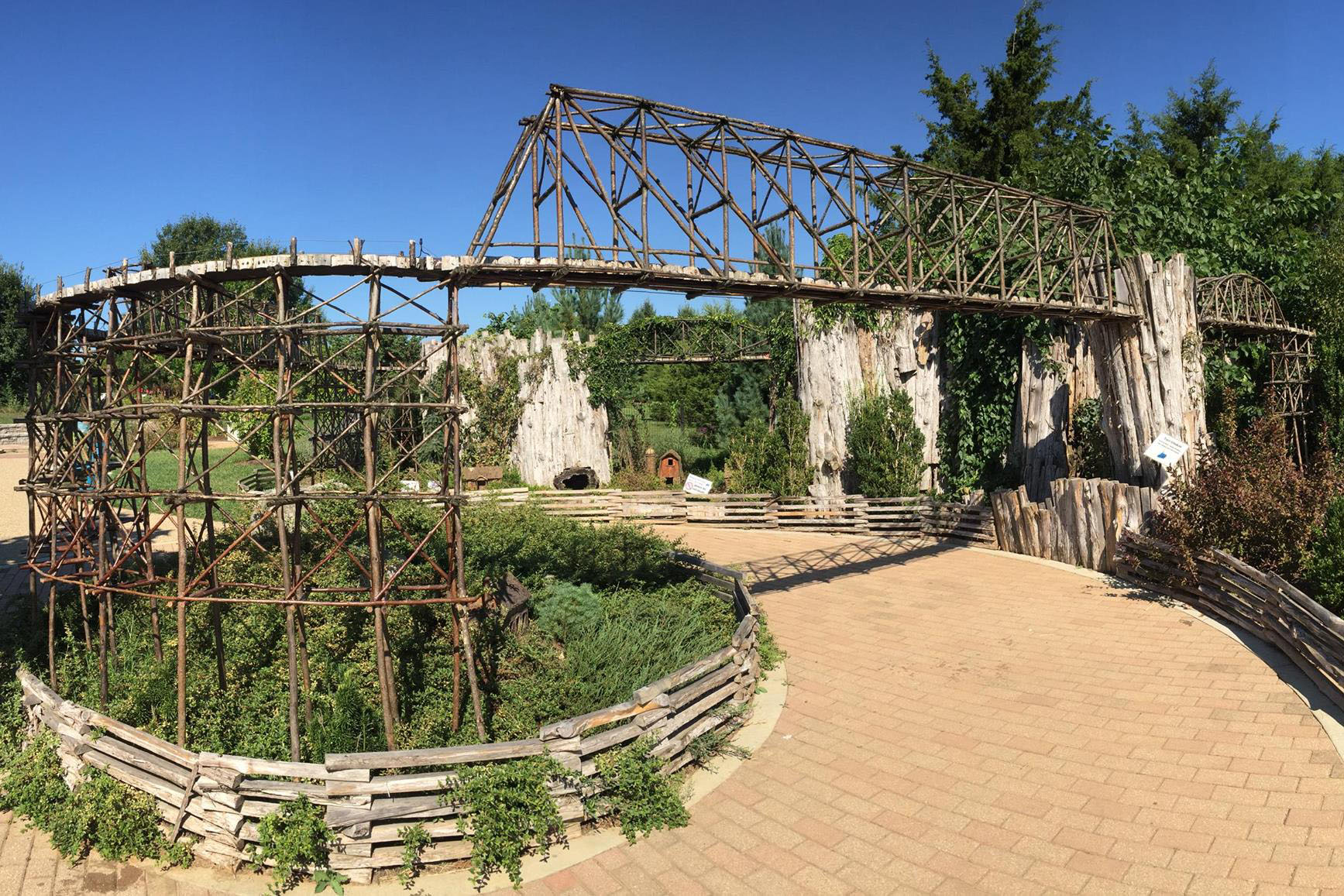
Transportation Garden
There are 1,840 miles of railway in Kentucky. In 1832, the first railroad connected Lexington to Ohio. Trains are an important way to transport food and other supplies across the country.
Our G-scale (garden) model train includes a C&O (Chesapeake and Ohio Railway) engine, a B&O (Baltimore and Ohio Railway) engine and Thomas the Tank Engine. The model railroad and buildings were designed by Applied Imagination, founded by Paul Busse and based in northern Kentucky.
Activity: Children can use the compass rose to find north and use a sundial to tell time. And you can discuss how seeds travel − through the air and water, on animal fur and by consumption.
